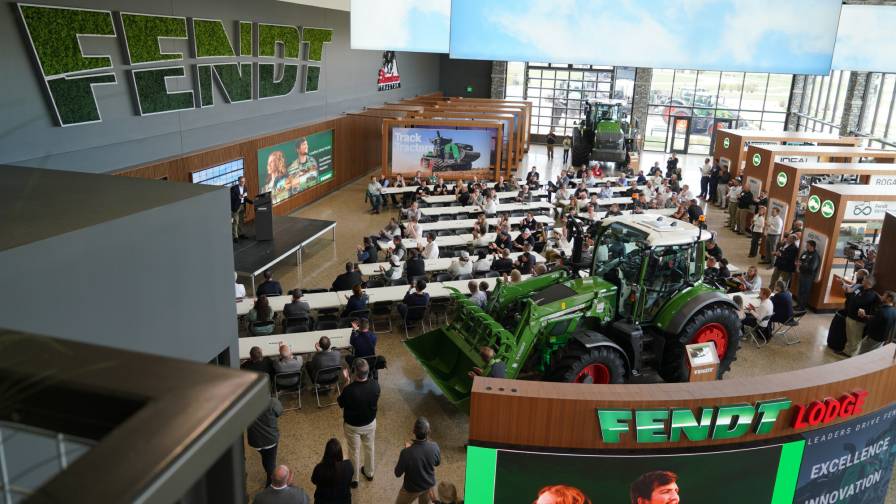Fertilizer Hoping to Build Upon a Strong 2018
Forecasting fertilizer fortunes in recent years has been filled with uncertainty. But based on the category’s 2018 performance, perhaps things are finally back on an upward growth curve.
Among crop inputs and services for ag retailers, fertilizer has been a bit of a problem child for several years. Between 2014 and 2017 this category lost almost $2.5 billion in market value for the nation’s top ag retailers, according to the annual CropLife 100 survey. Given these numbers, fertilizer’s market share among all crop inputs/services fell significantly, too, from 50% to 41% by the end of 2017.
In the estimation of many ag retailers early in 2018, the outlook for the year was equally uneven, mainly due to market dynamics. “Farm economics continue to be very challenging for farmers to turn a profit,” Dave Coppess, Executive Vice President of Sales and Marketing for Heartland Co-op, West Des Moines, IA, told CropLife® magazine during a December 2017 interview. “Convincing farmers to purchase products and quantities to assure a return-on-investment vs. the last dollar spent will be our greatest challenge — especially on rented ground, in which they have limited interest in building soil health and nutrient levels.”
But apparently many grower-customers became convinced that fertilizer investment was worth the cost as the 2018 growing season played out. When the final numbers were tallied from the 2018 CropLife 100 survey, the fertilizer category had recorded a small 0.8% increase from 2017, moving up from $12.1 billion in 2017 to $12.2 billion. Even more promising, 61% of survey respondents said that their 2018 fertilizer sales had improved year-over-year between 1% and more than 5%. This represented a big improvement over the 35% of CropLife 100 respondents that recorded this kind of sales increase for fertilizer during the 2017 growing season.
Good News in 2019
Now that the industry has one good year under its belt, can the fertilizer category continue to improve upon its market performance this year as well? Based upon the early read from several key ag retailers, the short answer to this question would seem to be “yes.”
“Positive,” says Tim McArdle, Vice President for BRANDT, Springfield, IL, when asked to describe his outlook for fertilizer. “There is the potential for additional corn acres in 2019. Also, there could be some carryover from a reduced fall application season.”
Early crop planting projection numbers back up part of this view. According to USDA, the nation’s growers plan to plant between 90 million and 94 million acres of corn in 2019, up from just over 89 million acres in 2018.
Meanwhile, John Oster, Sales Specialist for The Morral Companies, Morral, OH, shares in this positive outlook for fertilizer in 2019, pointing to improved commodity prices as evidence. “We are seeing a harvest corn price approaching $4 per bushel even with a record crop, and we are seeing projected ending stocks flat-to-lower this year vs. last,” Oster says. “There have been two years of record yields, both corn and soybeans. And without the current trade/tariff dust-up, we would see soybeans pushing $10 per bushel and corn at $4 per bushel. Remember, too, that all those extra bushels per acre dropped some surprise dollars to the best growers’ bottom lines. The good ones will be in a position to be aggressive in 2019.”
Drilling deeper into the fertilizer marketplace, how might the various macronutrients — nitrogen, phosphates, and potash — do in 2019? In this case, key ag retailers definitely predict there will be a clear-cut winner and a clear-cut loser in performance.
“Nitrogen will do best, given decent pre-plant weather because corn will be the crop of choice due to the counter-tariff impact on soybeans,” Oster says. “This will be particularly true if South America’s soybean crop is average or better on vastly increased hectares.
“Phosphates will perform worst due to environmental pressures and a significant cutback in soybean acres. Soils are showing increased phosphate deficiencies, but growers will be looking somewhere to cut costs, and phosphorus is perceived as being higher priced than potash at the moment.”
BRANDT’s McArdle agrees with this assessment, also looking to phosphorus to underperform. “I would call phosphate as the lowest performer due to cost,” he says. According to USDA projections, growers will reduce their soybean acres from a high of 89.1 million acres during 2018 to between 83 million and 87 million acres in 2019.
Expecting the Unexpected
Of course, with any beginning-of-the-year projection of market performance, there are always a few potential wild cards lurking in the deck. Chief among those is weather.
In fact, according to McArdle, weather has already come into play for the fertilizer forecast during the past autumn season. “Many Midwestern retailers applied less tons in the fall of 2018 due to wet and cold weather,” he says. “We will be facing tighter windows of application opportunity in the spring. And with price volatility, we will need to manage inventory closely.”
Morral’s Oster agrees that weather could continue to negatively impact fertilizer in 2019. “A challenge would be some sort of extreme and prolonged bad weather event,” he says. “This would force growers to forego spring fertilization in favor of getting their crop into the ground.”
In his mind, however, a bigger challenge to fertilizer growth in 2019 could come from something unexpected happening with transport. “A general and extended transportation strike — rail, truck, or water-borne — could really put some harmful pressure on a system that is going to be hard-pressed to satisfy spring demand, particularly for nitrogen and especially for anhydrous ammonia,” Oster says. “We already know that truck transportation is going to be in a big hurt due to driver shortages. I don’t see any improvement on that front this coming year. One report says we’re short more than 63,000 truckers, and the seasonality of our transportation demands puts us at the bottom of the list with more commercial/spot haulers.”
As for a somewhat brighter unknown factor impacting fertilizer, Oster thinks some movement on the U.S.-China trade war coupled with South American supply worries could help. “On a positive note, a resumption of serious soybean buying by China and having Brazil/Argentina run out of old crop soybeans would be a real shot in the arm for soybeans,” he says.
Still, BRANDT’s McArdle isn’t so sure some thawing in these trade relations would necessarily be good for fertilizer demand in 2019. “A trade and tariff resolution could cause a shift back to soybeans, which could impact fertilizer tons downward,” he says. “Also, farmers that did not get much fall tillage done may also consider more soybeans.”
Overall, however, Morral’s Oster believes that the fertilizer market outlook for 2019 should remain relatively upbeat — “other than some as-yet unforeseen ‘black swan’ event happening,” he says. “But I do not believe this is likely.”






